Tata Hexa BS6 XMA 4X4 Variant Spotted Testing In Pune: Spy Pics & Other Details
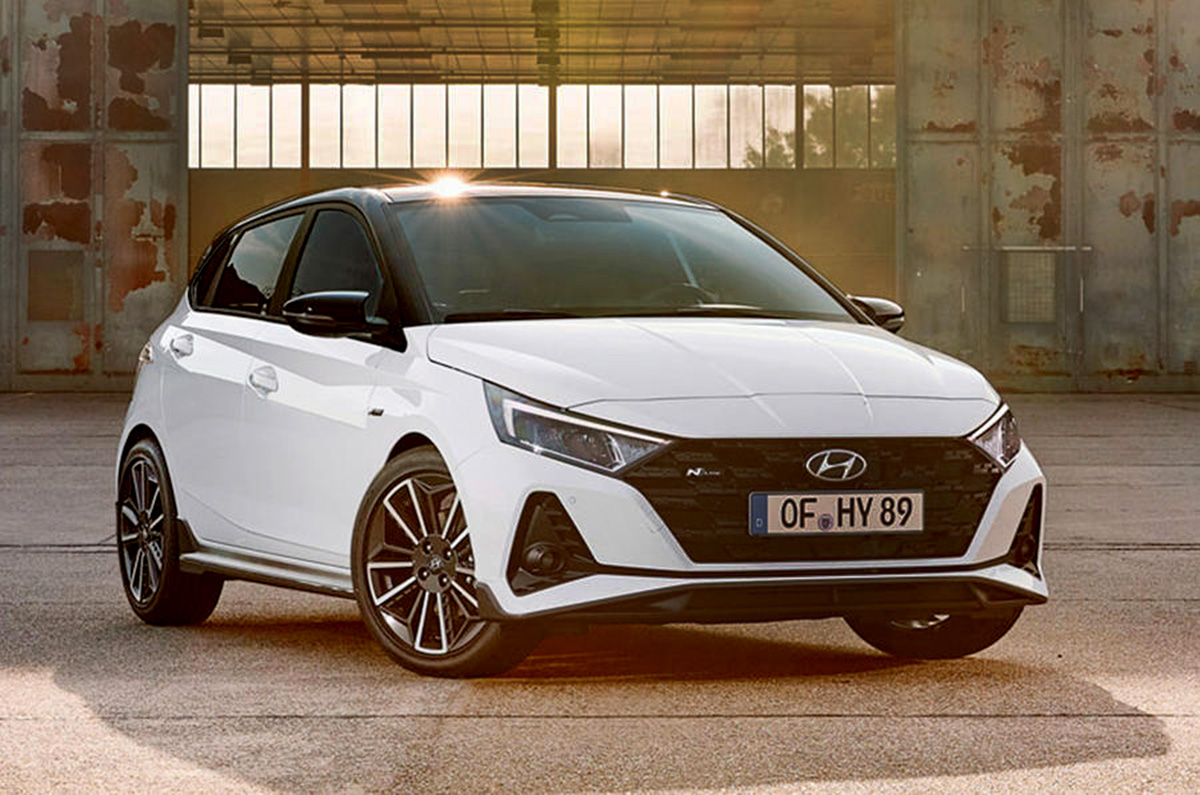
The Hyundai i20 N Line has been revealed and it is a new performance-inspired, range-topper for its third-generation i20. This is the first time the i20 has received an N Line trim-level. The model is expected to be introduced in international markets in the first half of 2021.
As with the N Line version of the i30 hatchback, the i20 N Line features a number of new styling elements inspired by Hyundai’s N performance arm. This gives a good idea of what to expect from the full-bore i20 N hot hatch, when it arrives internationally, next year.
At the front, the N Line is set apart from lower trims by a new bumper with a grey contrasting stripe, a black grille with a “chequered flag”style pattern and a prominent N Line badge.
The motorsport-influenced theme continues at the rear, where the i20 N Line gains a diffuser-style bumper, a triangular fog-light like that of the i30 N hot hatch and a chrome twin-exit exhaust.
The N Line will be available in a choice of four exterior colours: Phantom Black, Aurora Grey, Brass and Polar White, the latter of which can be specified with a black roof. Rounding off the exterior styling package is a set of bespoke, two-tone 17-inch alloy wheels.
Its interior is largely familiar from the recently renewed i20, but gains N badging and red stitching throughout, sport front seats, a bespoke steering wheel, metal pedals and an N-branded leather gear knob.
The i20 N Line joins the standard car in receiving Hyundai’s Bluelink connectivity software and a suite of advanced driver assistance systems.
Hyundai’s i20 N Line will be offered in Europe with a choice of two engines, a 1.2-litre three-cylinder petrol with 84hp or a 1.0-litre, three-cylinder unit with 100hp or 120hp.
The powertrain is equipped with 48V mild-hybrid technology and optionally available with Hyundai’s new Intelligent Manual Transmission (iMT), for boosted efficiency. Hyundai has also made tweaks to the car’s suspension, accelerator response and exhaust sound to enhance the driving experience.
While Hyundai hasn’t officially confirmed any plans to bring the i20 N Line to our market, it will launch the new third-gen i20 in India, this festive season.
The new Hyundai i20 will come with three engine options in India, the 1.0-litre turbo-petrol, the 1.2-litre naturally aspirated petrol and the 1.5-litre diesel. This will be accompanied by a number of new features available in the international model.
Once launched in India, the new Hyundai i20 will face competition from the Tata Altroz, Maruti Suzuki Baleno, Toyota Glanza and Honda Jazz.
Also see:
Using mobile phone while driving a car has been an offence in our country. There have been several reported cases in the past where driver’s have been fined for using mobile phone while driving. One of The main reason behind this ban was because it distracts the driver and can lead to an accident as well. Now, Union Ministry of Road Transport & Highways (MoRTH) has issued a notice mentioning some of the latest amendments made to the Central Motor Vehicle Rule 1989. According to the new revisions in the act, the person using the vehicle can now use mobile for two specific purposes.

The new amendment allows the driver to show the vehicle documents by electronic means. These documents that are validated through electronic means can be presented instead of physical documents. Online applications like DigiLocker already provided this facility and was acceptable before.

Also read: Toyota Innova does 10 lakh kms in India
This new amendment will make things easier for both drivers and the officer as the confusion has now been removed. The only catch in this amendment is that the documents presented electronically must be verified. Government portals like m-Parivahan and DigiLocker provide verified documents. If the documents are not verified, then the driver must present the physical documents for inspection.
In case, the driver’s license has been revoked or disqualified, details regarding the same will be available on the portal and the officer can check the same if needed. All the data regarding the vehicle documents will be stored and monitored electronically for convenience. All these rules now come as a part of amendments to Motor Vehicle Act (Driving) Regulations 2017. These new amendments come as a relief to many drivers who rely on mobile phone based navigation system on a daily basis.
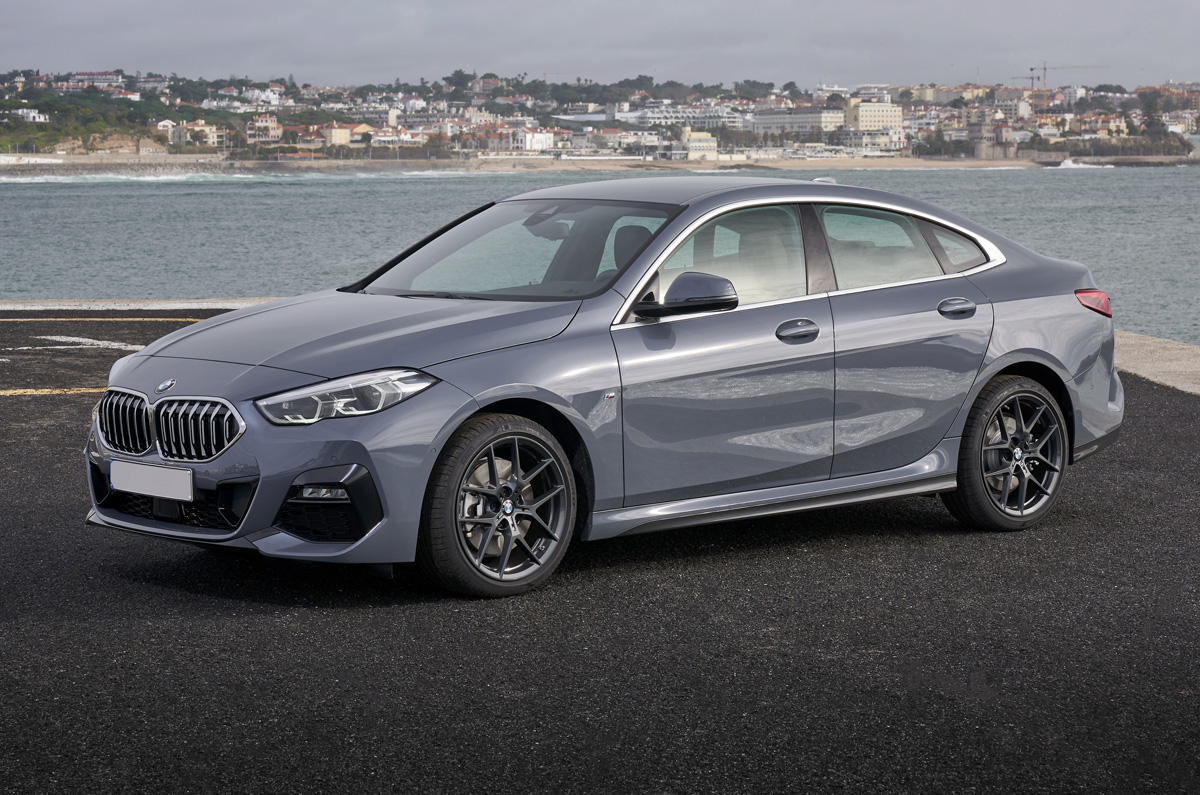
The BMW 2 Series Gran Coupe, the brand’s smallest four-door, will be launched in India on October 15, 2020. We tell you more about it.
To be positioned below the 3 Series, the BMW 2 Series Gran Coupé will take on the upcoming Mercedes-Benz A-class sedan and the Audi A3 sedan in our market. The 2 Series Gran Coupe is built on a front-wheel-drive platform and shares its underpinnings with the BMW X1 SUV.
The 2 Series Gran Coupe gets BMW's latest styling treatment inside out and is a slightly low-slung four door with a sloping roof and attractive pillar-less doors. At the rear, the sloping roof means headroom isn’t quite as much as you’d get in a more conventionally shaped sedan, but legroom is pretty decent for a car of this size.
The BMW 2 Series Gran Coupé measures 4,526mm – making it 23mm shorter than the upcoming Mercedes-Benz A-class Limousine. It is wider at 1,800mm, with the rear interior at 143cm compared to the Mercedes' 137cm. The 2-series Gran Coupe however, at 2,670mm, gets a shorter wheelbase than the Mercedes that measures 2,729mm between the wheels. The BMW also gets a decent sized 430-litre boot, although some of that space could be eaten into by the spare tyre in the India-spec car.
BMW will launch the 2 Series Gran Coupe with a 190hp, 2.0-litre diesel engine and the model will be called BMW 220d Gran Coupe. The petrol-powered 220i Gran Coupe is expected to join the line-up a little later, with a 192hp, 2.0-litre turbo-petrol engine.
The BMW 2 Series Gran Coupe’s prices in India are likely to start around Rs 35 lakh with prices for the top-of-the-line variants going up to about Rs 38 lakh (ex-showroom).
Also see:
BMW 2 Series Gran Coupe review, test drive
Altroz is Tata Motors first ever premium hatchback. It was launched in the market earlier this year and competes with cars like Maruti Baleno, Hyundai Elite i20, Honda Jazz in the segment. With 5 star rating at Global NCAP crash test, it is one of the safest car in its segment. Tata offers Altroz with both petrol and diesel engine options. There have been hints that Tata will be introducing a turbo petrol version of the premium hatchback in the market. It seems like Tata is all set to launch the turbo petrol petrol version of Altroz in the market as the prices of the same have already leaked online. The launch is likely to happen in a few weeks from now.

The upcoming turbo petrol version of the Altroz premium hatchback will be powered by a 1.2 litre Revotron engine that generates 110 Ps and 140 Nm of peak torque. The current 1.2 litre naturally aspirated petrol engine of the Altroz generates 83 Ps and 113 Nm of torque. According to the leaked documents, the price for turbo petrol version will start at Rs 7.99 lakh, ex-showroom and go up to Rs 8.75 lakh. It will be available in four trim levels – XT, XT(O), XZ and XZ(O).

Also read: Tata Altroz Diesel gets a solid price cut: Only diesel car in India”s premium hatchback market
The turbocharged petrol engine will be mated to a 6-speed manual gearbox. Although, there have been talks about introducing a DCT gearbox in Altroz, it is not known whether the turbo petrol engine will come with an automatic gearbox or not. Currently petrol and diesel engine versions of Altroz is available with a manual gearbox only.
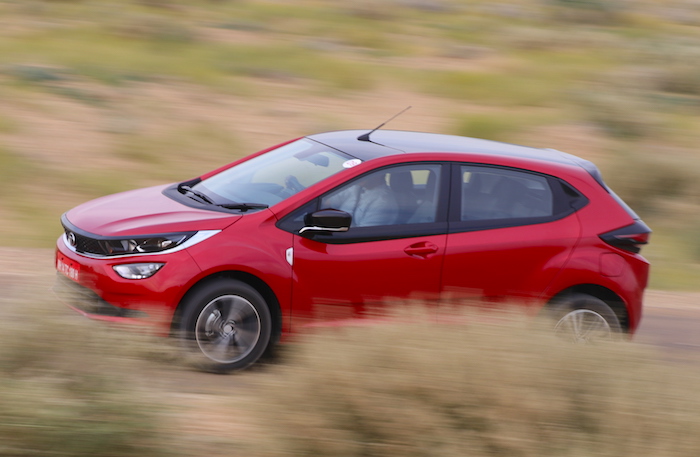
The turbo petrol version is definitely pricier than the naturally aspirated version but, in comparison to other premium hatchbacks like Volkswagen Polo and Baleno petrol, it is still cheaper. Tata Motors had initially showcased the turbo petrol version of Altroz at Geneva Motor Show last year. Apart from the new engine, no changes are expected in the hatchback in terms of design and features.
Altroz is also available with a 1.5 litre turbocharged diesel engine. It generates a maximum of 90 Ps and 200 Nm of peak torque mated to a manual gearbox. If Tata Motors prices the Altroz in this manner, then there are chances that they will pose a threat to other cars in the segment who are expensive than Tata’s premium hatchback.
The Kerala MVD and Traffic Police are on a drive against any kind of violations and they are extra vigilant nowadays. The officials are extra vigilant against any kind of modifications and are keeping a close eye on even motorcycles for the aftermarket exhausts. Here is a video that shows Kerala traffic police waving down a Royal Enfield Himalayan and then using Google to check if the bike is in stock form.
The person who made this video was on a brand-new Royal Enfield Himalayan BS6 and was following another friend on the road. The video shows them riding through the roads when a cop sees them and asks the rider on Himalayan to stop. The cops then ask him to hand out his driving license while they check for the details online. While one of the cops was checking the driving license details, his colleague started asking about the exhaust.
Also read: Beautifully customized Royal Enfield Himalayan on-off road motorcycle on video
Since Royal Enfield launched the BS6 version of the Himalayan earlier this year, there have done a few changes. The biggest change of all is the addition of a bigger catalytic converter in the exhaust head. Compared to the BS4 version of the Himalayan, the cat-con really stands out and looks much bigger. The cop started asking questions about the exhaust and when the rider tells him that it is stock, the cop was not satisfied with the answer.
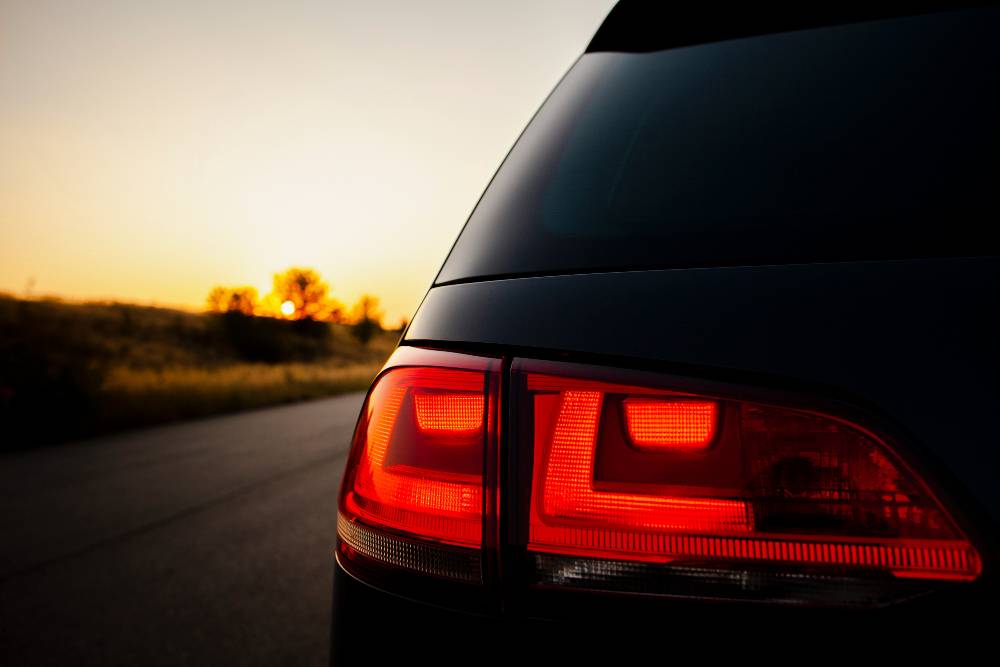
The cop who was checking the license details did not find anything pending against the rider and joined his colleague to check the exhaust. Both of them search on Google to see if the exhaust looks stock. After they see the big catalytic convertor on the Internet, they verify the size and let the rider leave.
It seems that the Kerala officials have now started referring to the Google images to check if the vehicle is in stock form. A few days ago, another Royal Enfield Himalayan rider was issued a fine of Rs 5,000 by the cops after they spot an aftermarket handlebar on the bike. Until now, cops used to overlook the handlebars but it seems that they will really tighten the noose in the coming weeks to ensure that bikes and cars are in perfectly stock condition.

It should also be noted that the Kerala MVD can also cancel the registration of the vehicle if the modified parts are not replaced with the stock ones. Earlier this month, MVD Kerala issued a notice to cancel the registration of a modified Isuzu V-Cross for six months or until the modifications are reversed to the stock form. There are many who also say that that the cops are targeting cars with stickers on them and issuing hefty fines.
Also read: 2021, all-new KTM RC 390 sportsbike: What it could look like
The engine of any automobile is the most important part of the vehicle. A healthy engine will prolong the life of your vehicle and will also ensure that you get the most out of your vehicle. While taking the car regularly to the service centre and doing a proper diagnostic will reveal a lot about the health of the engine, it is always a good idea to pay close attention to the engine by understanding the signs. You can save an engine by recognising early warning signs. Here are 10 such warning signs that you should never ignore.
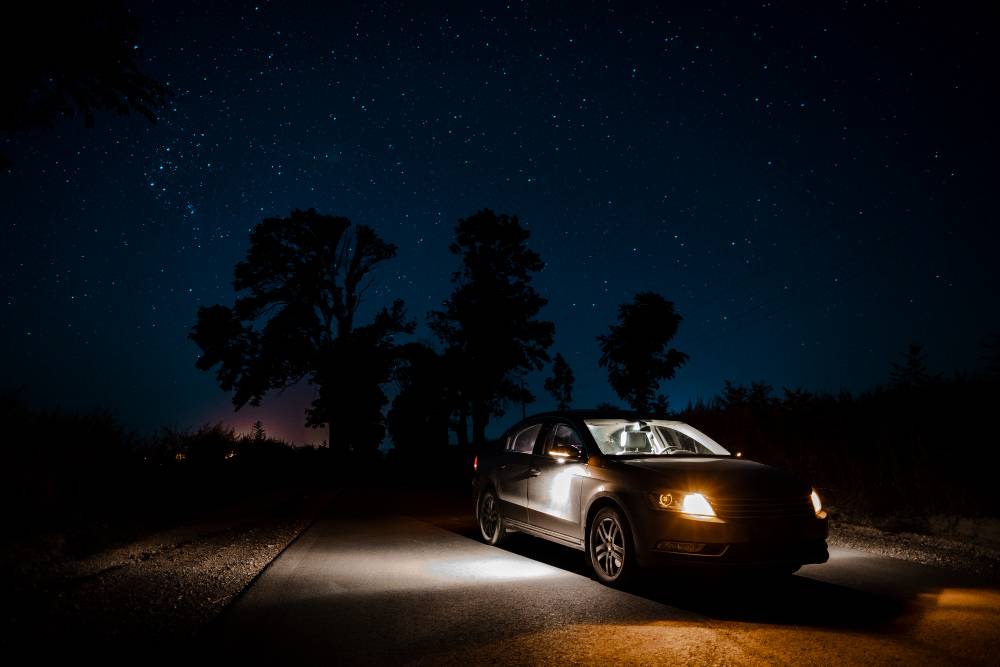
Any new sound coming out of the mechanical parts of the vehicle can be a big sign of something abnormal happening under the hood. Weird sounds can happen due to backfire or knocking. There are different reasons for both. Backfire happen when the air and fuel do not combust completely in the chamber and unburnt residue comes out of the exhaust manifold. Knocking happens when the air-fuel mixture before than the optimal time. Both these situations can be troublesome for the engine and should be addressed immediately.

Also read: Toyota Fortuner SUV gets a Lexus body kit thanks to KitUp
Modern cars have become much cleaner and minimal residue now comes out of the exhaust pipes. If you see the smoke of any colour coming out of the exhaust, you should know that there is a problem. You can determine the problem by checking for the colour of the smoke. Black smoke coming out may indicate that the car is running a rich air-fuel mixture. Also, it can a sign of fuel pump delivering more fuel than required. Smoke can also cause by faulty spark plugs in petrol cars. If you see blue smoke, it can indicate that the engine is burning the engine oil and there can be a leak somewhere.

If you feel excessive vibrations while driving over a smooth road, it can be an indicator of faulty engine mounts. If the mounts are worn out, it can cause vibrations even when the car is idling. Also, misfiring in the engine can cause vibrations and you can make it out by listening to the sound of the engine carefully.
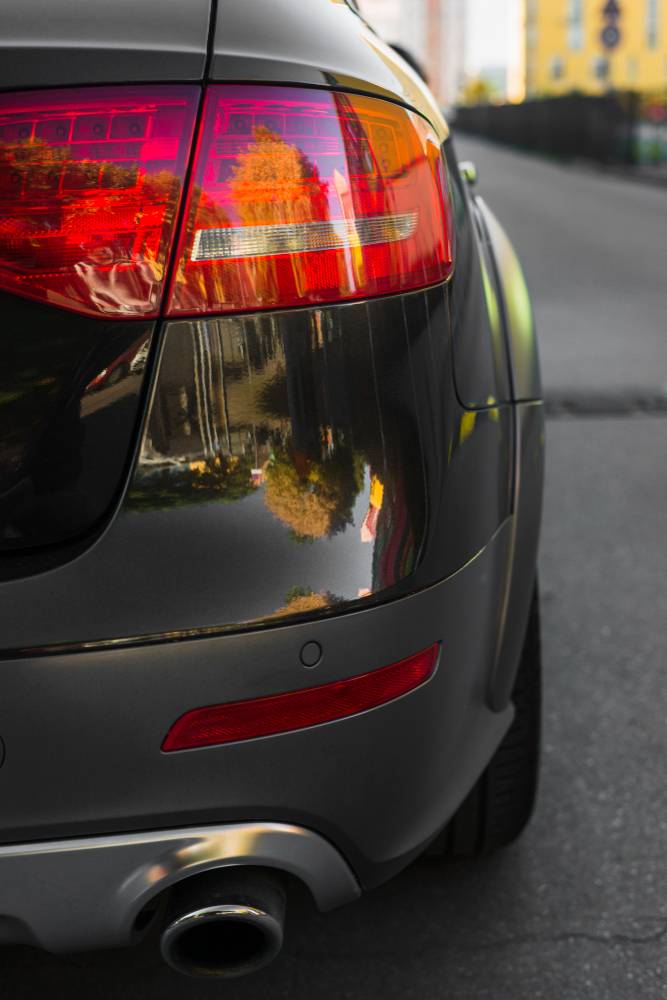
Modern cars offer an array of warning lamps that will show you the exact reason for the fault in your vehicle. Engine check lamp is one such important warning that you should not ignore. If you restart the vehicle and the lamp is still glowing, it is time to visit the service centre as soon as possible. Engine check lamp can glow for various reasons but the real reason can be identified only after proper diagnostics.

Most modern cars offer an engine temperature gauge that will indicate if the engine is operating at an optimum temperature. The ideal temperature of the car is when the needle stays in the middle. If you see the needle moving towards the hotter range, you should know that the cooling system of the engine might be malfunctioning and you will need to get it fixed. Driving around with overheated engine can seize it.
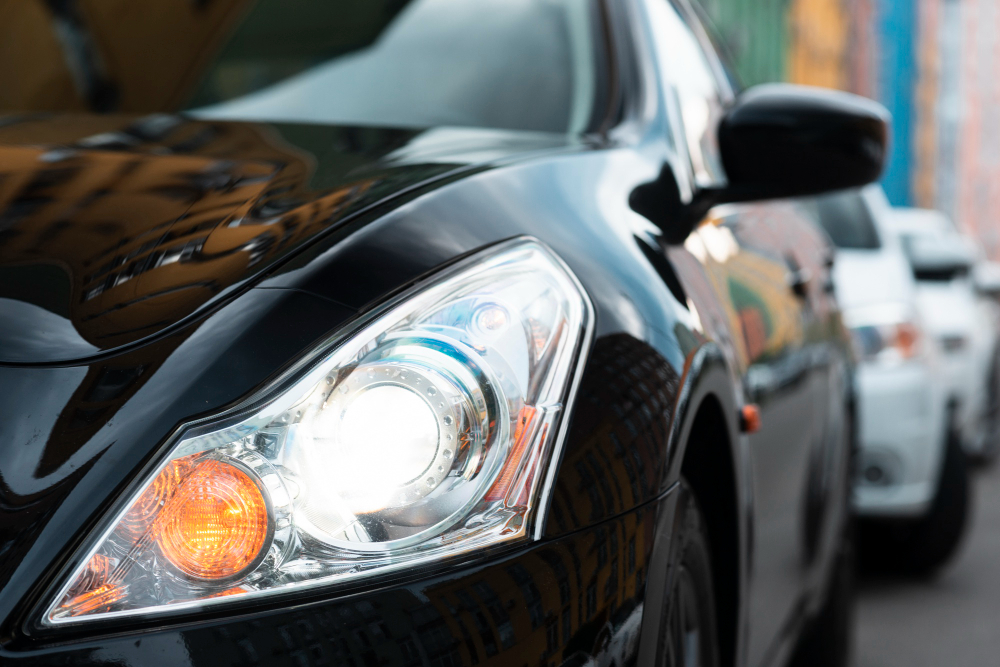
The engine oil provides lubrication to the engine and ensures proper, smooth working. Over time, the engine oil level may go down due to various reasons. Since low engine-level means that there will not be proper lubrication, you should always keep an eye on the oil level. Also, if the vehicle is losing engine oil too quickly, you should get the engine checked for leaks.

If you experience loss of power while accelerating or failing to reach the top speed of the car can mean major engine problems. The most basic reason can be the engine not getting enough fuel and air. Also, the fuel filter can get clogged, suppressing the flow of the fuel. If you’re driving a vehicle with a turbocharger, there might be a problem with the turbocharger unit as well.
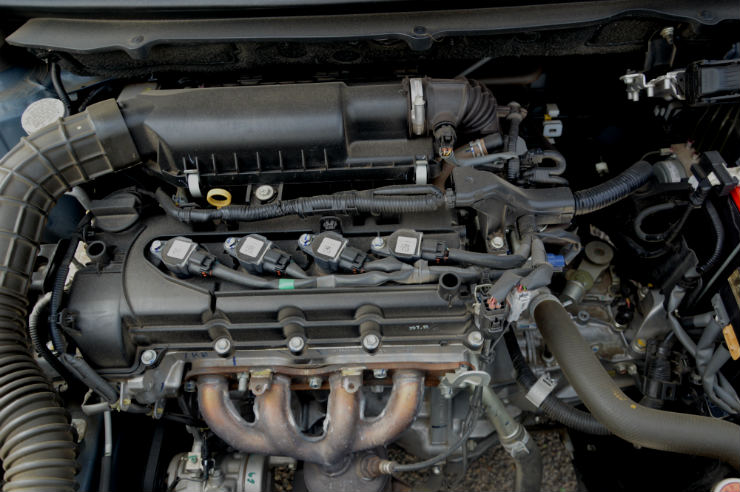
Engine misfiring can be detected by an unusual sounding engine. Since modern engines are controlling by ECUs, there can be a problem with the electricals of the vehicle. Also, bigger problems can involve ECU. In most cases, faulty spark plugs is the reason behind misfiring while in extreme cases, loss of compression can also be the cause.

This problem can happen to only petrol cars since diesel vehicles do not use spark plugs. If you see oil on the spark plugs, it definitely means that the engine oil has somehow reached them. There can be a leak in the oil chamber.
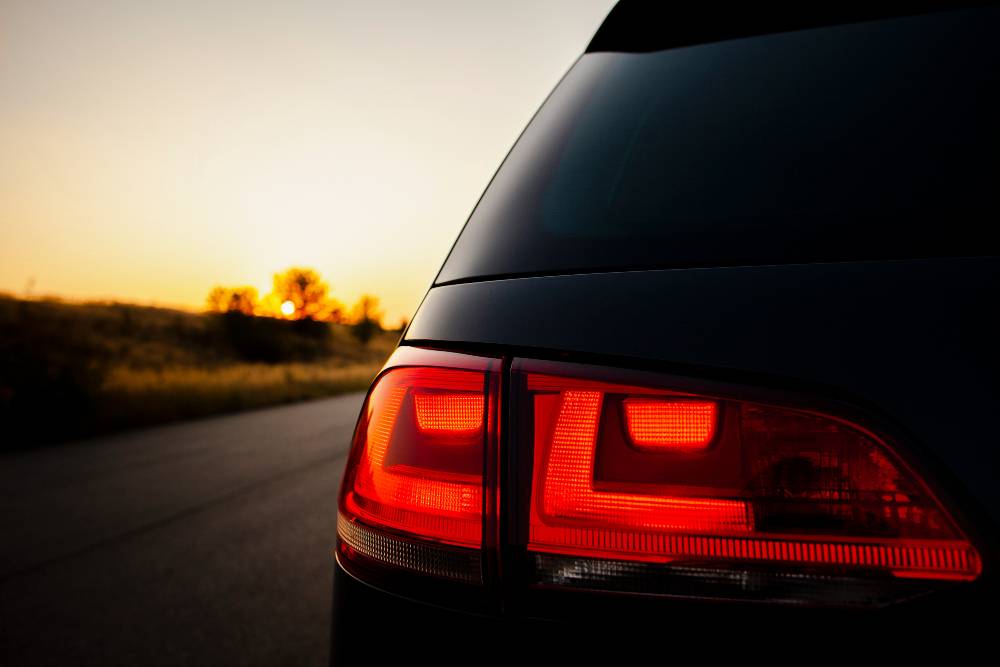
Engine braking is the opposite of accelerating. You can engage engine braking by releasing the accelerator and clutch. Engine braking is a healthy practice and prolongs the life of the brake pads. It is also very common in the hilly roads where engine braking is used to control the speed during downhills. If you experience loss of engine braking, it means there is not enough compression in the chamber and it can lead to some problems.
Also read: 5 SUVs that make climbing stairs look so easy: Toyota Fortuner to Mahindra Thar (Video)
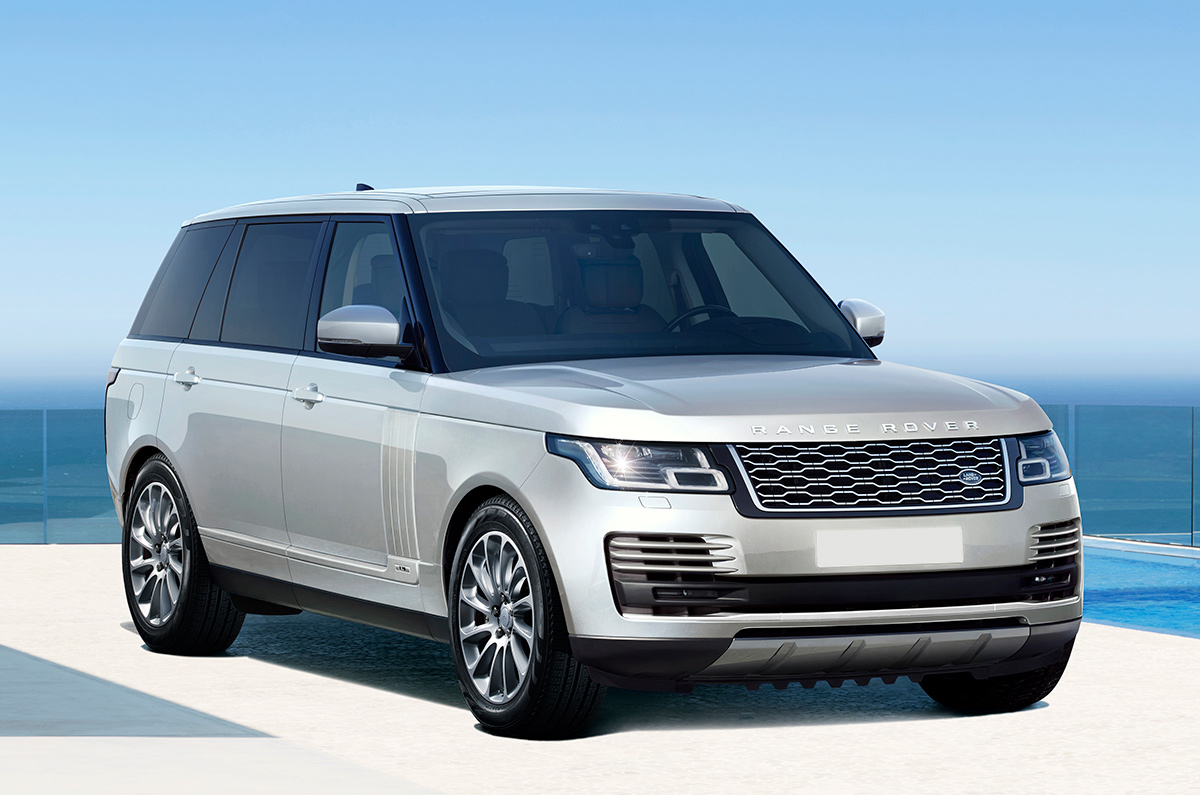
The 2021 Range Rover and Range Rover Sport prices for India have officially been released. Earlier this year, we brought you details on the new engines that the two SUVs would get, and now they’re officially on sale.
While the Range Rover Sport gets a single body style, the full-size Range Rover is available in both standard and long-wheel-base or LWB forms. Both cars get a petrol engine option – a 2.0-litre, four-cylinder in the case of the Range Rover Sport and a 3.0-litre six-cylinder in the Range Rover, and these are joined by a new 3.0-litre inline six-cylinder diesel engine too.
| 2021 Range Rover Sport prices (ex-showroom, India) | |
| Variants | Price |
| 2.0 petrol S | Rs 88.24 lakh |
| 2.0 petrol SE | Rs 95.42 lakh |
| 2.0 petrol HSE | Rs 1.01 crore |
| 3.0 diesel S | Rs 1.08 crore |
| 3.0 diesel SE | Rs 1.23 crore |
| 3.0 diesel HSE | Rs 1.40 crore |
| 3.0 diesel HSE Dynamic | Rs 1.44 crore |
| 3.0 diesel HSE Silver | Rs 1.48 crore |
| 3.0 diesel HSE Dynamic BLack | Rs 1.51 crore |
| 3.0 diesel Autobiography Dynamic | Rs 1.72 crore |
Let’s start with the prices of the Range Rover Sport first. The petrol variants range from Rs 88.24 lakh to Rs 1.01 crore (ex-showroom) and are available in three variants.
The diesel, on the other hand, is available in seven variants and ranges from Rs 1.08 to Rs 1.72 crore. This includes the fully loaded, top-spec Autobiography Dynamic variant, which is only available with the diesel engine.
The 5.0-litre, petrol powered, V8 Supercharged SVR prices have not been officially announced just yet.
| 2021 Ranger Rover prices (ex-showroom, India) | |
| Variant | Price |
| 3.0 petrol Vogue | Rs 1.97 crore |
| 3.0 petrol LWB Vogue | Rs 2.11 crore |
| 3.0 petrol LWB Westminster | Rs 2.18 crore |
| 3.0 petrol LWB Westminster Black | Rs 2.24 crore |
| 3.0 petrol LWB Vogue SE | Rs 2.31 crore |
| 3.0 petrol LWB Autobiography | Rs 2.58 crore |
| 3.0 petrol LWB Range Rover Fifty | Rs 2.77 crore |
| 3.0 petrol LWB SVAutobiography | Rs 4.09 crore |
| 3.0 diesel Vogue | Rs 1.97 crore |
| 3.0 diesel LWB Vogue | Rs 2.11 crore |
| 3.0 diesel LWB Westminster | Rs 2.18 crore |
| 3.0 diesel LWB Westminster Black | Rs 2.24 crore |
| 3.0 diesel LWB Vogue SE | Rs 2.32 crore |
| 3.0 diesel LWB Autobiography | Rs 2.58 crore |
| 3.0 diesel LWB Range Rover Fifty | Rs 2.77 crore |
| 3.0 diesel LWB SVAutobiography | Rs 4.09 crore |
The flagship Range Rover SUV is available in standard wheelbase with petrol and diesel variants both priced at Rs 1.97 crore (ex-showroom). The long wheelbase Range Rover is available in seven variants, including the limited-edition Westminster, Westminster Black and Range Rover Fifty variants.
Prices for petrol and diesel LWB models range from Rs 2.11 crore for the entry-level Vogue to a whopping Rs 4.09 crore for the flagship SVAutobiography.
The petrol engine on the Range Rover Sport is the same one that will also be available in the upcoming Land Rover Defender. It is a 2.0-litre, 4-cylinder, turbocharged unit (P300) that makes 300hp at 5,500rpm and 400Nm of peak torque between 1,500-4,000 rpm. The petrol variants can get from 0-100kph in just 7.3sec and on to a top speed of 201kph.
The larger Range Rover, on the other hand, gets a 3.0-litre Ingenium, 6-cylinder, turbo-petrol motor. The engine makes 400hp at 5,500-6,500rpm and 550Nm of torque at 2,000-5,000rpm. Despite its larger size, the petrol Range Rover gets from 0-100kph in 6.3sec and on to a top speed of 225kph.
The diesel engine is brand new – a 3.0-litre, inline 6-cylinder unit (D300) that makes 300hp at 4,000 rpm and a whopping 650Nm of peak torque at 1,500-2,500rpm. The all-aluminium engine, featuring a 48V mild-hybrid setup, is said to be soother and more refined than previous similarly-sized diesel offerings from JLR.
Internationally, the new diesel meets RDE2 or Real Driving Emission Step 2 norms that are far more stringent than our own BS6 norms here in India.
Bookings for the 2021 Range Rover and Range Rover Sport, including the special editions, are now open across dealerships or on Land Rover India’s online portal. Deliveries of these new SUVs will begin in late 2020.
Also see:
2021 Range Rover image gallery
2021 Range Rover Sport image gallery
New Land Rover Defender India launch on October 15
Range Rover EV and electric Jaguar XJ delayed due to COVID-19
A global leader in paint protection technology and with operations in more than 23 countries, Permagard is now in India. The company produces protective coatings for automobiles, yachts and aircrafts and these coatings are designed to deliver peak performance in even the toughest of environments and provide unmatched long-term paint protection.
Permagard products are based on cutting-edge engineering expertise garnered over decades of intensive research and development. In fact, depending upon the intended application, *Permagard products are tested at heights of up to 40,000 feet, at temperatures ranging from -50 to +50 degrees Celsius, at speeds of up to 850kph, and for distances of up to 1.6 million kilometers a year.* This harsh testing ensures optimum real-world performance for the end user. No wonder, then, that Permagard solutions have the stamp of approval from global brands like Porsche, Mercedes-Benz, Honda, Boeing and Airbus, amongst others.
The Permagard shine philosophy revolves around a molecular relationship that result in extreme bonding, stabilizing, gloss-producing, curing process, corrosion protection and hydrophobic efficiency.
The essential oils used in the making of paint, oxidizes with time, due to sunlight, UV radiation, airborne pollutants, salt / hard water, diesel fumes and even bird droppings. With the application of environmentally safe, eco-friendly, hypoallergenic, Permagard solutions, your car’s paint gets a high-quality protective coating and an almost liquid, glass-like sheen that provides strong protection against the elements. *The company’s patented reactive polymer technology and UV filtering technologies provide long-term protection against paint fading and oxidation.* As an added bonus, Permagard-treated surfaces only need to be cleaned with water. Auto enthusiasts can also use the *Permagard 380 GSM microfiber cloth* with our *PH neutral Permagard Shampoo* to keep their cars shining & protect the painted surface.
While Permagard products can, of course, be applied to new vehicles, *older vehicles can also get the same paint rejuvenation benefits.* Certified Permagard technicians first carry out an extensive cleaning of your car’s paint surface and fill in all micro-scratches, marks and swirls. After this, the paintwork is re-sealed and restored to showroom condition, followed by once-a-year application of Permagard paint protection to keep your vehicle looking brand-new.
Permagard protection extends beyond just your car’s exteriors and can also keep the interiors in pristine condition. *The company’s interior co-polymer technology ensures that all the materials used inside your car’s cabin – including the carpet, leather (and/or leather-like material) upholstery, fabric, plastics, and vinyl – look, feel and smell new for years.* Stains are easily cleaned with nothing more than water, while the protective coating blocks UV rays and prevents cracking and fading, which otherwise takes place due to exposure to sunlight.
*Permagard’s Antimicrobial Shield disinfectant treatment utilizes the most advanced germ-killing technology, which is so effective that it kills almost 99.999% of viruses and bacteria instantly while coming in contact with them.* Lysis technology ambushes and assassinates viruses & germs by deflating the cell membrane of the microbe and eradicating its edifice. Microscopic nanoparticles coat the surface and kill the pathogens by piercing & rupturing the cells, before it settles & penetrates onto the surface making it effective not to let the further molds & mildews grow. It removes odours and makes your car a healthier place to be in. The antimicrobial shield also instantly kills COVID-19 type virus.
In India, the company is based in Ahmedabad, with more than 45 operational dealers in Gujarat, Delhi, Mumbai, Kolkata, Indore, Bhopal & Punjab. You can log on to Permagardindia.com for more information on how you can avail their services.
For dealership / application center enquiries across India please email support@permagardindia.com
Everyone is aware that claim settlements are a cumbersome process that requires several meetings with insurance company officials to get a single process completed, or even to get it initiated. However, modern consumers want everything at their disposal and they want it yesterday. Thankfully, insurance companies have been very helpful in catering to their requirement and making this process way less time consuming than before. With the help of technological innovations, now you can easily get your two wheeler or car insurance claims settled within a day without the hassle of fixing appointments and running to and fro from the garage and the company office.
E-claims via video streaming are here to make car insurance much easier. It has allowed the consumer to file for claim settlement up to Rs. 50,000 within a day. It is hassle-free, cost effective, time-effective, and possibly everything we ever wanted from an insurance company. We might witness more companies using this facility to increase the ease of access for their clients and get better engagement as well.
Let’s find out how you can file an e-claim with your car or two wheeler insurance company!
E-claim is the procedure of filing for a claim settlement online, without the need to visit the insurance company office. With this new technology, a representative or surveyor will be able to assess your car via video streaming, and advice you on next steps, and get the claim settled, that is, get the amount sent to your account within a day. It is just as easy as the process of buying car insurance online.
The current technology in use for this process is known as ‘Intelligent Video Streaming and Settlement’ or ‘i-ViSS’.
With the i-ViSS system in place, the claim settlement process has obviously been simplified multifold. It involves a five-stage procedure that offers a streamlined solution to the consumer.
Here’s how you can use it for your vehicle:
This process has proved to be a boon for all. Now it is easier to get more done in less time. However, there are some factors that limit its efficiency but the companies are taking extra care to not let it become a barrier in user experience and satisfaction.
Also see:
Branded Content: What You Need to Know Before You Renew Your Motor Insurance
A taxing time for the auto industry
Branded Content: Lesser known insurance add-on covers we bet you didn’t know about
In a new initiative by the government, there will be no need to carry driving licenses and other related documents from 1st October. The government said that the records of vehicular documents, including driving licenses and e-challans, will be maintained through an information technology portal from 1st October 2020.

From now on, the police will not ask for the physical inspections for the forms like Driving License or insurance of the vehicle. The new software will be used to issue the challans and police officers will be able to check all the details related to the vehicle online through the new portal. All the documents will be uploaded in the system for the police to verify.
Some time ago, the government launched a new app, which allowed motorists to download a digital copy of their documents including the registration certificate and driving license. This move allowed the motorists to move around without these two documents as they can be downloaded in a smartphone. With the new move, there is no need to download the documents as the cops will be able to verify them in their own systems with the help of the new software. The only physical document that any motorist will need to carry will be pollution under check certificate. There is no clarity if the motorists need to carry it or it will be linked to the registration number of the vehicle automatically.
Also read: Beautifully customized Royal Enfield Himalayan on-off road motorcycle on video
The police officers will get new devices for the purpose. However, in any case, the police officer is without a device, the software is being prepared, which can be downloaded in the smartphones for the same tasks. The software will be linked to the transport database.
The cops will not ask for the documents from now on if they need to issue a challan. It will be issued electronically. On non-payment of the challan, the owner will not be allowed to sell the vehicle or renew the driving license. The Ministry of Road Transport and Highways made various amendments to the Central Motor Vehicles Rules 1989 to introduce the new laws.
In the past, many incidents have occurred where the policemen have been injured trying to stop rogue drivers. With the new law, the cops can simply write down the registration number and check the related documents online. They can also send a challan online through the new software. It will be also quite beneficial for the motorists who can keep the original documents at home safely.
Also read: 2021, all-new KTM RC 390 sportsbike: What it could look like
In August 2020, the two-wheeler segment clocked sales of 15,59,665 units, marking a marginal 3 percent year-on-year growth. Here's a closer look at their performance in August 2020 as well as their cumulative sales from April-August 2020.
The Honda Activa has topped scooter sales charts in India for years now. Even though demand has dropped substantially over the past year, the gap in scooter sales between the Honda Activa and other scooters is still significant.
In August 2020, the Activa sold a total of 1,93,607 units, which constitutes a 17.36 percent YoY decline. The fall in sales is greater for the April-August 2020 period: 4,62,014 units versus 11,44,317 in April-August 2019, down by a massive 60 percent.
Also see: Honda Activa 6G review, test ride
With 52,378 units sold in August 2020, the TVS Jupiter sits at second place on this list. In comparison, 57,849 units of the TVS Jupiter were sold in August 2019. Like the Honda Activa, YoY demand for the Jupiter is down as well. In the April-August 2020 period, the Jupiter has sold a total of 1,47,814 units, down by a substantial 48 percent.
Also see: BS6 TVS Jupiter review, test ride
In August 2020, the Honda Dio climbed past the Suzuki Access 125 to take the third spot on this list. The new Dio sold 42,957 units, up by 14 percent in comparison to the same month from last year (August 2019: 37,726 units). It’s also one of the few scooters to have seen an increase in sales. However, for the April-August 2020 period, the Dio’s 1,00,133 units are 53 percent lower than the April-August 2019 figure of 2,12,438 units.
Also see: New Honda Dio: 5 things to know
The Suzuki Access remains India’s best-selling 125cc scooter, but its sales have taken a hit. In August, the Access sold a total of 41,484 units, down 15 percent year-on-year. This fall in numbers has resulted in a drop from the third spot, a position it held for a fairly long time. Sales were also down in the April-August 2020 period, with a total of 83,750 units sold, a massive 66 percent down YoY.
Also see: Suzuki Access 125 BS6 review, test ride
The second TVS scooter in this top 10 list, the NTorq, maintains its fifth position. However, like with the Jupiter, sales are down. In August 2020, total sales fell below the 20,000 unit mark to 19,918 units, down 22 percent (August 2019: 25,578). The consolidated April-August 2020 story is no different, 59,966 units, which is down 47 percent YoY (April-August 2019: 1,12,345).
Also see: BS6 TVS Ntorq 125 Race Edition review, test ride
The Hero Pleasure is also one of the few scooters that has seen an increase in sales numbers, albeit by a miniscule margin. The 16,935 units that were sold last month, are slightly better than the 16,308 units of August 2019. In the first five months of FY2021, the Pleasure Plus sold 51,112 units, down 18 percent YoY (April-August 2019: 62,120).
Also see: BS6 Hero Pleasure Plus 110 FI launched at Rs 54,800
The Yamaha Fascino, too, has seen an improvement in its sales. At 15,668 units in August 2020, sales are up 7 percent YoY (August 2019: 14,652), In April-August 2020, the Fascino has clocked 37,956 units, down 48% (April-August 2019: 73,487).
Also see: Yamaha Fascino 125 review, test ride
Following the Fascino is Yamaha’s other scooter, the Ray ZR. The Ray ZR sold a total of 15,620 units in August 2020, which is a substantial 57 percent growth from a year ago. However, for the April-August 2020 period, cumulative sales are 38,844 units, down 24% (April-August 2019: 51,148).
Also see: Yamaha Ray ZR 125 review, test ride
Things seem to be improving for the Hero Destini 125. In August 2020, this Hero scooter sold 13,609 units, which is a 40 percent increase from the 9,735 units that were sold in August 2019. However, the April-August 2020 figure is down by 37 percent to 41,111 units.
Also see: BS6 Hero Destini 125 launched at Rs 64,310
The Honda Grazia has seen the most notable year-on-year increase in sales. In August 2020, the Grazia sold a total of 12,588 units, which is a 71 percent rise from the 7,356 units that were sold in August 2019. For the April-August 2020 period, sales are 23,056 units, down 53% YoY.
Also see: BS6 Honda Grazia: 5 things to know
Tata Nexon is one of the popular compact SUV in the sub-4 meter segment. It is also one of the safest car in the segment with 5 star rating in Global NCAP. Tata launched the facelifted version of Nexon as part of BS6 transition, earlier this year. With the facelift, Nexon has become a bit more matured and SUVish. Tata Motors is now gaining popularity in the market and to maintain momentum, the manufacturer is coming up with new schemes for customers. Tata has now started offering attractive finance schemes to the customers of the Nexon SUV.
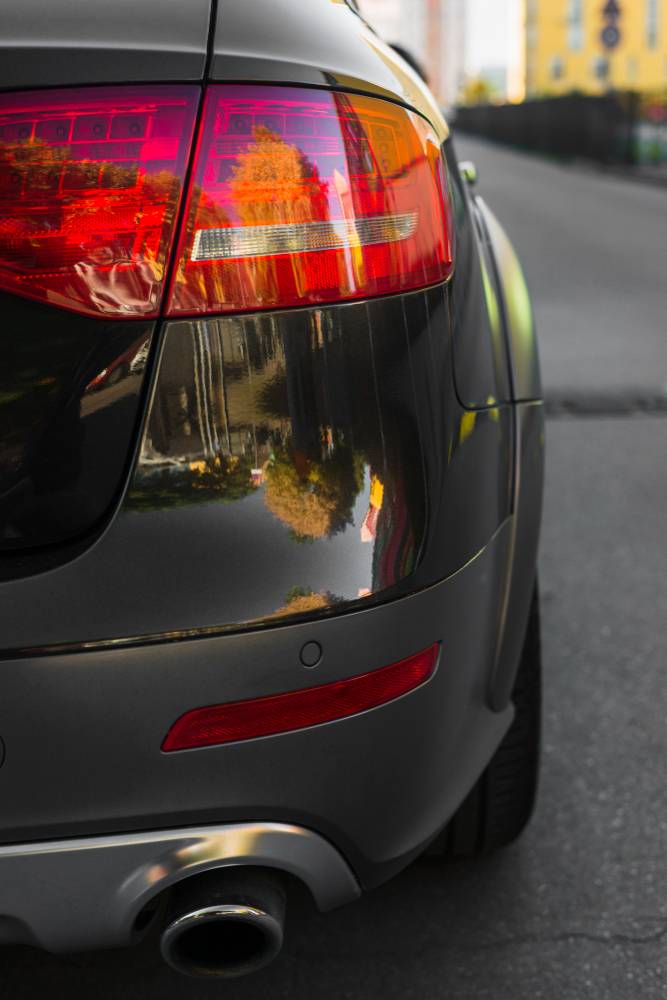
Tata Nexon is now being offered for an EMI as low as Rs 5,999. The low cost EMI amount is applicable for the first six months and the amount will keep on increasing over a period of time till five years. By the end of the tenure, Tata is offering its customers to even re-finance the remaining amount once again. Apart from this new EMI scheme, Tata is also offering finance options like 100 percent on-road funding with zero down payment.
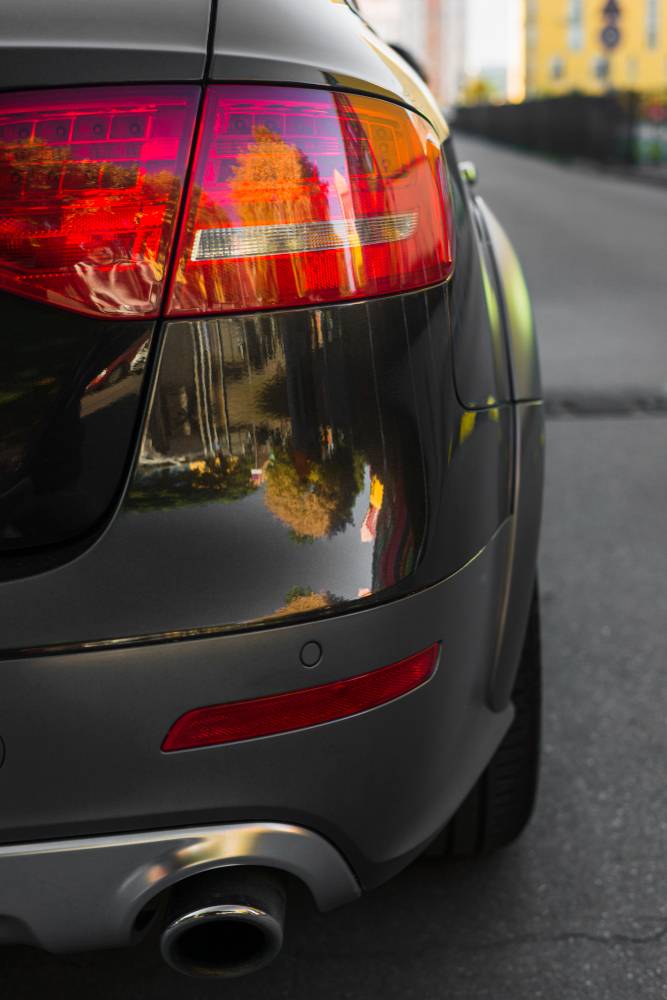
Also read: Toyota Fortuner SUV gets a Lexus body kit thanks to KitUp
Customers can also look opt for EMI holidays for six months. In this scheme only the monthly interest is serviceable. To know more about these details, interested buyers can get in touch with the nearest Tata Motors dealership. Tata Nexon competes with cars like Maruti Brezza, Hyundai Venue, Mahindra XUV300, Ford EcoSport and recently launched Kia Sonet in the segment. It is a highly competitive segment and Tata has been trying their best to stay in the competition.

Tata has been launching new trim levels with more features at affordable price tag to attract customers. It is offered with features like touchscreen infotainment system, electric sunroof, projector headlamps, LED tail lamps, alloy whels, rear AC vents and so on. Nexon is available with both petrol and diesel engine options. The 1.2 litre turbocharged petrol engine generates a maximum of 120 Ps and 170 Nm of torque. The diesel version is powered by a 1.5 litre turbocharged unit that generates 110 Ps and 260 Nm of peak torque. Both petrol and diesel engine options are available with manual and AMT gearbox options. Nexon is the only car in the segment to offer so.
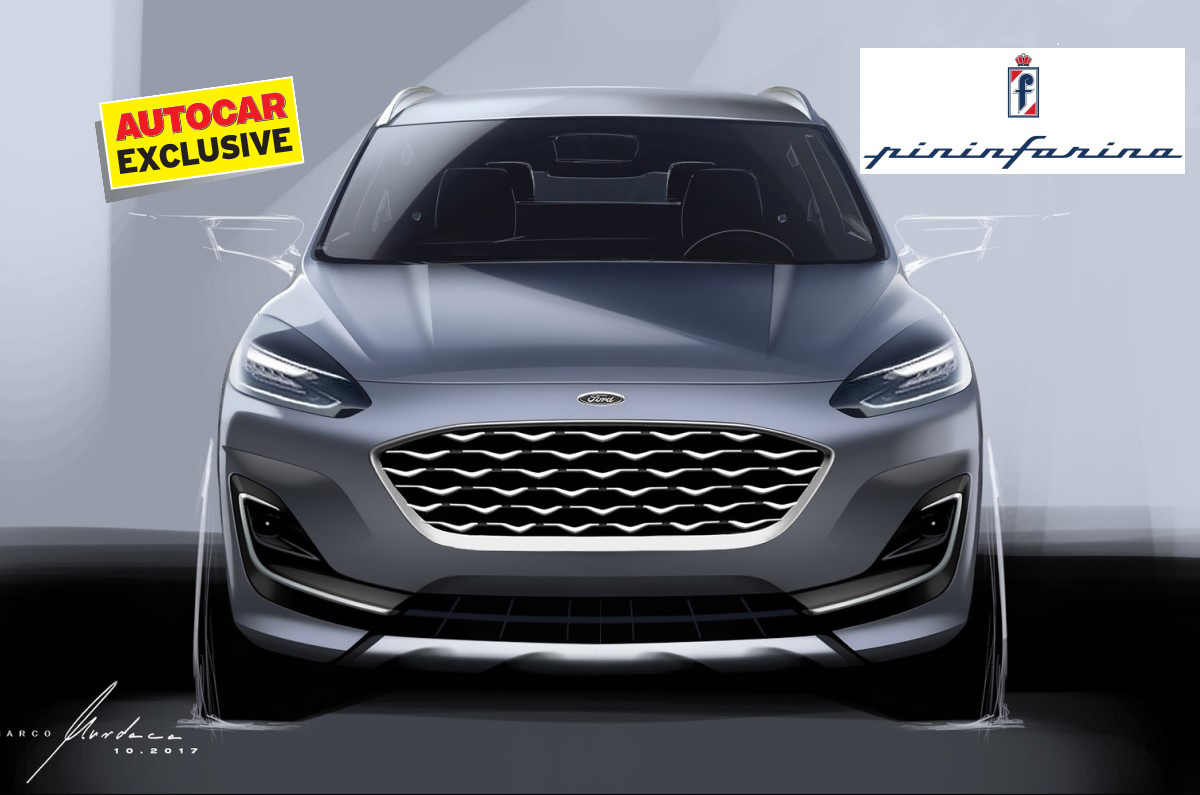
That Ford and Mahindra are jointly developing new SUVs for the Indian market is not news at this point, but sources now tell us that these SUVs will be designed by none other than Pininfarina.With a legacy of creating some of the most desirable designs, including a long line of jaw-dropping supercars, this news bodes well for how eye-catching the upcoming Ford SUVs will be.
The first model to emerge from the Mahindra-Ford joint venture will be a new C-SUV.The platform and engines will be shared between what will be the next-gen XUV500 (code: W601) and Ford’s version of the SUV(code: CX757).
This new Ford C-SUV, which will rival the likes of the Tata Harrier and MG Hector and sit above the likes of the Hyundai Creta and Kia Seltos, will be the first one to be designed by Pininfarina.
When Ford’s new SUV arrives after the launch of the next-gen XUV500 early next year, it is expected to share its180hp, 2.2-litre diesel and the 190hp, 2.0-litre turbo-petrol engines. The latter has recently made its debut on the second-generation Thar.
Following the launch of the C-SUV will be a smaller B-segment SUV that will directly rival the Creta, Seltos and Nissan Kicks, and will have a length of 4.3m.
The Ford BX745 will be unveiled in the second half of FY22andshare its underpinnings with the upcoming Mahindra XUV400 (S204). Like the C-SUV, the Ford BX745 SUV will also be designed by the Mahindra-owned design house.
A 163hp, 1.5-litre turbo-petrol engine from Mahindra’s mStallion family and a 123hp, 1.5-litre diesel engine are expected to power both B-SUVs.
While Ford’s current compact SUV is nearing the end of its lifecycle, the next-gen EcoSport (code: BX744) is said to be underdevelopment and is also likely to get design inputs from Pininfarina. Although a 2021 launch was mooted, this may be delayed due to the ongoing COVID-19 pandemic. Expect it to carry forward the engines from the soon-to-be-updated current EcoSport, there are more details on that below.
Both brands had confirmed that while the new SUVs may share certain mechanical components, they will be unique in design. Whether this means Mahindra’s SUVs will not be designed by Pininfarina is yet to be confirmed.
The American company also promises that its models will retain the fun-to-drive character that Ford cars are known for.
Before these three new SUVs arrive, the current Ford EcoSport will soon get a Mahindra engine, the 1.2-litre T-GDI engine that made its debut at Auto Expo 2020 in the Mahindra XUV300 Sportz.
As this three-cylinder direct-injection turbo-petrol unit makes 130hp and 230Nm of peak torque, the EcoSport will continue to be the most powerful compact SUV on sale. Expect the Mahindra-powered EcoSport to launch early next year.
Also see:
Ford Endeavour Sport launched at Rs 35.10 lakh
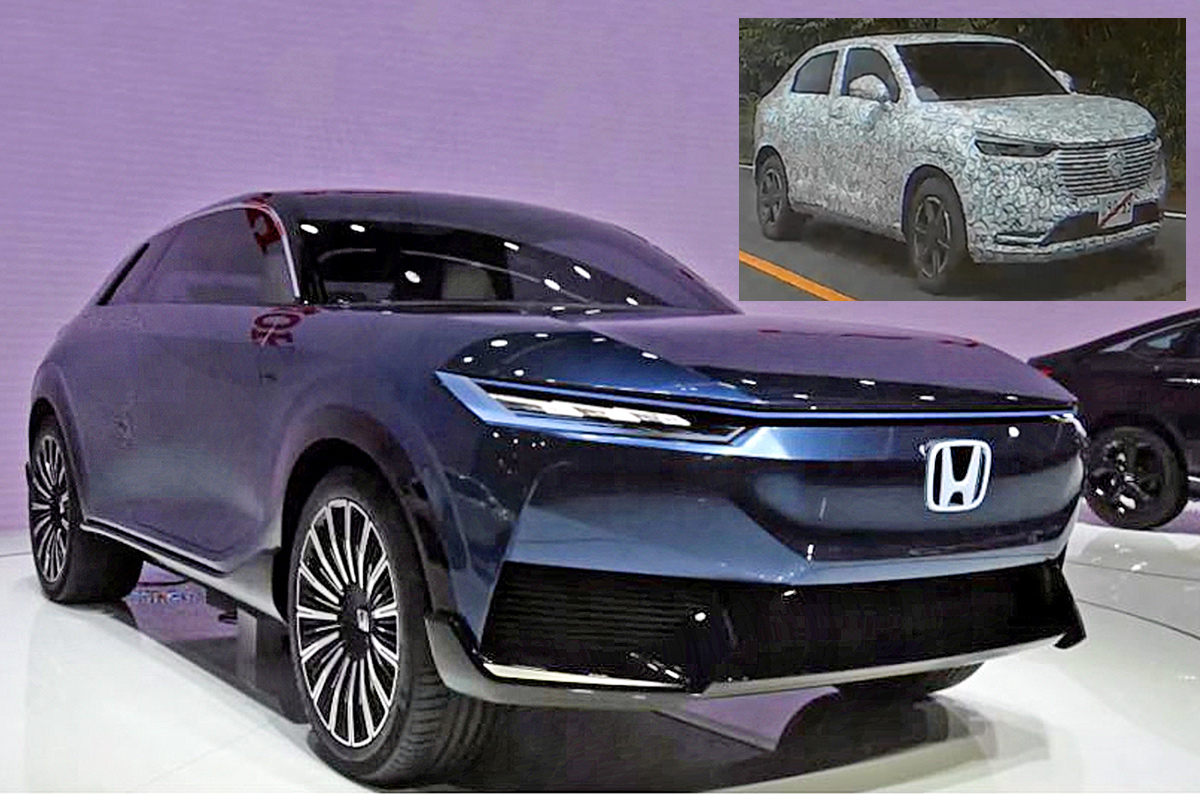
The Honda SUV eConcept, a stylish preview of the upcoming next-gen Honda HR-V, has been unveiled at the 2020 Beijing Motor Show. We tell you more about it.
There is a new Honda electric SUV coming to global markets that will first be launched in China. The company has unveiled the Honda SUV e: concept at the 2020 Beijing Motor show that previews this future SUV. Sources tell us that this concept also previews the next-gen Honda HR-V that is due to see a world premiere by May 2021.
The new Honda SUV e:concept gets fresh looks but it does feature some traditional Honda design cues. On the inside, the concept SUV gets a minimalistic interior with a large display screen horizontally placed behind the steering wheel, similar to the Honda e electric hatchback and there is a large vertically oriented screen too that is located in a high-set center console that clearly divides the driver and passenger compartment.
Honda has not revealed many details about this concept, but says the production version will feature an electric powertrain as well as petrol and hybrid options. There will also be ‘omnidirectional ADAS’ (advance driver assist systems), which allows for safe driving in more complex and diverse driving conditions.
The vehicle will also debut a new, more advanced Honda Connect system that will have an AI interface and smartphone link.
Unlike its predecessor, the next-gen Honda HR-V will be sold in a more markets and will feature multiple powertrain options.
The second-gen Honda HR-V has already begun is already being tested out on the road, and spy photos reveal that the new model does share its upright nose, character lines and coupé-like roofline with the e:SUV concept.
Additionally, the rear styling of the next-gen HR-V also features similar slim horizontal tail-lamps to the ones on the concept.
There is no news on this as of now, but Honda has confirmed it is working on a four-metre-plus SUV that could make it to India in the future. In fact, the first-gen Honda HR-V was almost launched in our market, but was axed at the last minute due to low localisation and high costs.
Honda SUV e: concept image source
Honda next-gen HR-V spy shots source
Renault India has announced the addition of 34 new sales and service touchpoints across India over the last 2 months. With the latest update...
Copyright ©
Automobile reviews | Powered by Blogger
Design by Tomas Toman | Blogger Theme by NewBloggerThemes.com